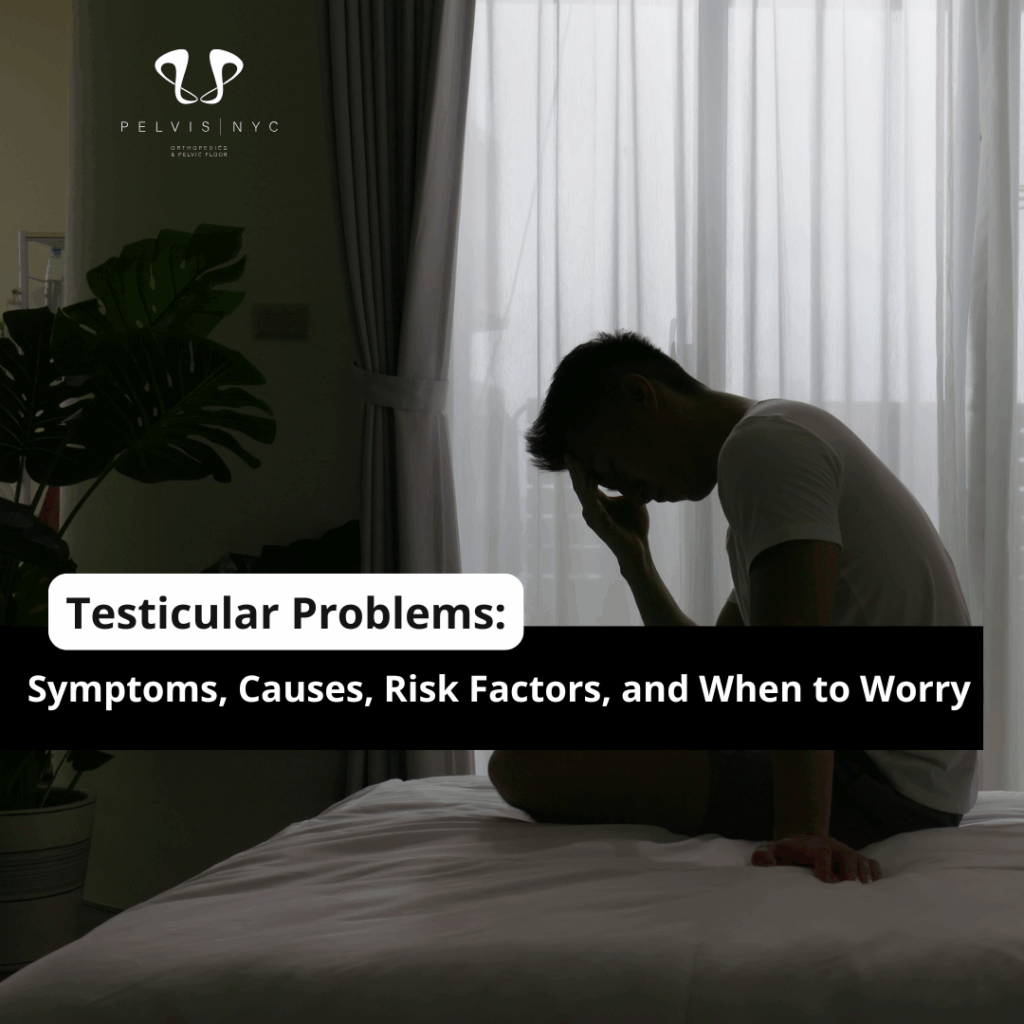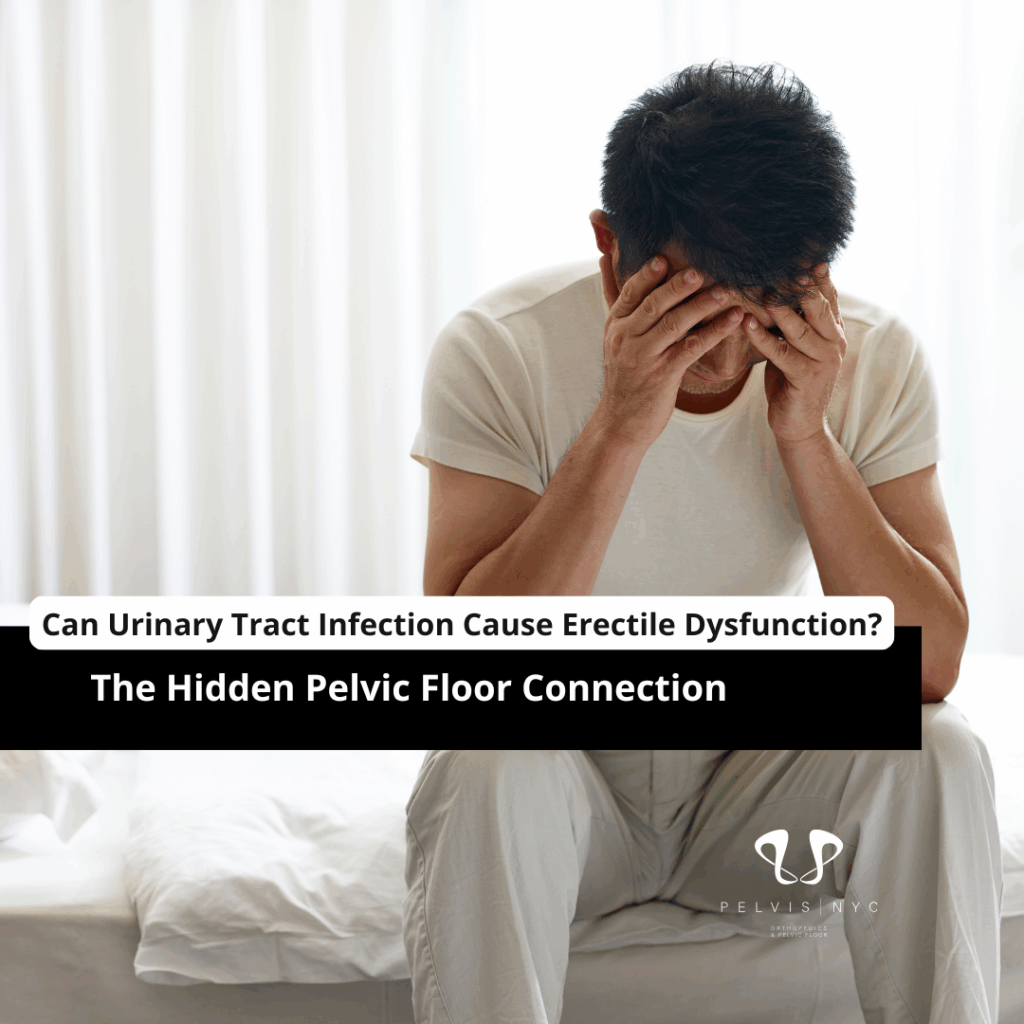Experience abdominal pain is a common complaint that affects people of all ages. Whether it’s a dull ache, abdominal tenderness, or a sharp stabbing sensation, this can significantly impact daily activities. As physical therapists at PELVIS NYC, we often encounter patients with this condition and help them understand and manage their symptoms. This blog will discuss the causes, symptoms, and physical therapy approaches for abdominal pain, ensuring you have the knowledge to address this issue effectively. By the end of this guide, you will have a clear understanding of how to find abdominal pain relief and promote recovery.
Causes of Abdominal Pain
Pain in the abdominal can arise from various sources, including:
- Muscular Strain: Overuse or injury to the abdominal muscles, often from heavy lifting or intense exercise. This can cause localized pain and abdominal tenderness.
- Acute Abdominal Pain: Pain that begins suddenly, typically within a few hours or days, and is intense and potentially serious. While often caused by minor issues, severe cases may indicate a serious medical problem that requires immediate attention, such as appendicitis. This can also be associated with abdominal rigidity.
- Digestive Issues: Conditions like irritable bowel syndrome (IBS), constipation, or food intolerances can cause discomfort. These issues can lead to abdominal cramping, abdominal bloating, abdominal distension, and irregular bowel movements. Over-the-counter medications can often alleviate stomach pain caused by digestive issues like IBS or food intolerances.
- Internal Organs: Problems with internal organs such as the liver, gallbladder, or appendix can manifest as abdominal pain. For example, gallstones or appendicitis often cause severe, localized pain and abdominal swelling.
- Gastrointestinal and Liver Disease: Discussed in medical literature and textbooks, these diseases cover various aspects of abdominal pain and systemic diseases, highlighting their relevance in clinical practice and surgery.
- Kidney Stones: Formed due to high levels of minerals in urine, kidney stones are a common cause of colicky pain in the abdomen and require immediate medical attention if severe symptoms arise.
- Post-Surgical Pain: Pain in the abdomen is common after surgeries, especially those involving the abdomen or pelvis. Scar tissue or adhesions can contribute to ongoing discomfort.
- Chronic Abdominal Pain: Lasting for three months or more, this type of pain may indicate underlying health conditions and could occur alongside other symptoms, necessitating medical attention if severe or persistent.
- Chronic Conditions: Diseases like Crohn’s, ulcerative colitis, or endometriosis can lead to ongoing pain in the abdomen. These conditions often require long-term management and care.
- Menstrual Cramps: Common during menstruation, menstrual cramps can cause significant pain in the abdomen. While often painful, they typically do not indicate serious medical issues and can be treated with home remedies or over-the-counter medications.
Symptoms to Watch For
Identifying the causes of abdominal pain can provide clues about its cause:
- Location: Pain in the upper abdomen might indicate issues with the stomach or liver, while lower abdominal pain could be related to the intestines or reproductive organs. Stomach pain, particularly in the upper abdomen, might indicate issues with the stomach or liver and should be monitored closely. Additionally, watch for symptoms like abdominal distension, which can signal underlying issues.
- Type of Pain: Sharp, stabbing pain can suggest a more acute issue, whereas a dull ache might indicate a chronic condition. Abdominal tenderness and abdominal rigidity are other symptoms to watch for, as they can indicate a serious underlying condition.
- Abdominal Discomfort: Conditions like endometriosis can lead to various gastrointestinal issues such as bloating and cramping, contributing to abdominal discomfort.
- Mild Abdominal Pain: This can often resolve on its own and may be associated with non-serious issues like gas or bloating. Self-care strategies such as hydration, rest, and over-the-counter medications can be effective. However, if the pain persists, seeking medical advice is recommended.
- Severe Abdominal Pain: Recognizing severe pain in your abdomen is crucial as it can be a potential indicator of serious medical conditions like appendicitis or acute gastrointestinal issues. If the pain is intense, sudden, or accompanied by other concerning symptoms, immediate medical attention is necessary.
- Associated Symptoms: Nausea, vomiting, fever, diarrhea, or changes in bowel habits can help pinpoint the underlying causes of this pain in adults.
Mild Abdominal Pain
Mild abdominal pain is often less alarming but can still be disruptive to daily life. Abdominal bloating is a common symptom associated with mild abdominal pain. Here’s what you should know:
Common Causes
- Digestive Upset: Mild pain often links to temporary digestive issues like gas, indigestion, mild constipation, or abdominal cramping.
- Muscle Strain: Light strains from physical activity can cause minor discomfort.
Managing Mild Abdominal Pain
- Hydration: Drinking plenty of water can help alleviate digestive discomfort.
- Dietary Adjustments: Avoiding spicy or fatty foods may reduce symptoms.
- Gentle Exercise: Light activities like walking can aid digestion and reduce muscle tension.
- Heat Application: A warm compress or heating pad can relax muscles and ease pain. Applying heat can also help reduce abdominal swelling.
- Over-the-counter remedies: Antacids or mild pain relievers can be effective for occasional discomfort.
Stomach Pain
Stomach pain, a specific type of abdominal pain, can stem from various sources and often overlaps with other types of abdominal pain. Understanding its nuances can help in managing it effectively.
Common Causes
- Gastritis: Inflammation of the stomach lining, often caused by infection or prolonged use of NSAIDs, can lead to stomach pain.
- Ulcers: Open sores on the stomach lining can cause burning pain, especially when the stomach is empty.
- Acid Reflux: Stomach acid flowing back into the esophagus can cause heartburn and discomfort.
- Food Poisoning: Contaminated food can cause sudden, severe stomach pain, often accompanied by vomiting and diarrhea.
Managing Stomach Pain
- Avoid Trigger Foods: Spicy, acidic, or fatty foods can exacerbate stomach pain and should be avoided.
- Eat Smaller Meals: Eating smaller, more frequent meals can reduce the strain on the stomach.
- Stay Upright After Eating: Avoid lying down immediately after eating to prevent acid reflux.
- Over-the-Counter Antacids: These can neutralize stomach acid and provide quick relief.
- Hydration: Sipping water throughout the day can help maintain digestive health and ease stomach discomfort.
Physical Therapy Approach to Chronic Abdominal Pain
As physical therapists, our goal is to diagnose pain in the abdomen by identifying the underlying causes through thorough physical examinations and symptom assessments, and then alleviate pain and improve function through non-invasive methods. Conditions like endometriosis can also be managed effectively with physical therapy. Here’s how we address this type of pain:
- Conduct a detailed patient history to understand the onset, duration, and nature of the pain, including potential causes like abdominal muscle strain.
- Perform a comprehensive physical examination to assess muscle tenderness, flexibility, strength, and abdominal tenderness, focusing on the abdominal wall to identify the specific areas contributing to the pain.
- Develop a personalized treatment plan that may include manual therapy, exercises, and patient education to manage and reduce pain.
- Monitor progress and adjust the treatment plan as necessary to ensure optimal outcomes.
If you want to know more about the Role of Physical Therapy in Easing Lower Abdominal Pain, click the link now!
Assessment and Diagnosis
We start with a thorough assessment to understand the nature of your pain. This includes:
- Medical History: Understanding any past injuries, surgeries, or chronic conditions such as Crohn’s disease or ulcerative colitis. It is also important to consider menstrual cramps as a common but often harmless cause of abdominal pain.
- Physical Examination: Checking for muscle tenderness, flexibility, strength, abdominal distension, and abdominal rigidity. Conditions like inflammatory bowel disease may also be identified during this assessment.
- Movement Analysis: Observe how you move to identify any abnormalities or compensations.
Treatment Strategies
- Manual Therapy: Techniques like myofascial release, trigger point therapy, soft tissue mobilization, and abdominal massage can help reduce muscle tension, improve circulation, and manage symptoms such as abdominal swelling.
- Exercise Therapy: Customized exercise programs to strengthen the core muscles, improve flexibility, and enhance overall stability.
- Postural Education: Teaching proper posture and body mechanics to prevent strain and reduce pain.
- Breathing Techniques: Diaphragmatic breathing and other exercises to relax the abdominal muscles and reduce pain.
- Lifestyle Modifications: Advice on diet, hydration, and activity levels to support overall health and minimize pain triggers.
When to Seek Medical Attention for Severe Abdominal Pain
While physical therapy can address many causes of abdominal pain, certain symptoms require immediate medical attention:
- Severe, unrelenting pain
- Severe pain accompanied by high fever, vomiting, or jaundice
- Sudden, sharp pain in the lower right abdomen (possible appendicitis)
- Blood in stool or urine
- Abdominal rigidity
- Abdominal distension
- Persistent or severe stomach pain, especially when accompanied by other symptoms, should also prompt immediate medical evaluation.
- Stomach flu: Viral gastroenteritis, commonly known as stomach flu, presents with symptoms such as abdominal pain, nausea, vomiting, and diarrhea. If these symptoms are severe, it is important to seek medical care to prevent complications like dehydration and fever.
Conclusion
Managing abdominal pain can be complex, but with the right approach, you can effectively manage it. At PELVIS NYC, we commit to helping you find relief through personalized physical therapy treatments. If you’re experiencing this, don’t hesitate to reach out for a comprehensive assessment and tailored treatment plan. Together, we can work towards a pain-free life.
By understanding the causes and symptoms of abdominal pain, and utilizing targeted physical therapy strategies, you can take control of your health and wellbeing. Remember, your path to relief and recovery starts with the right knowledge and support.




No comment yet, add your voice below!